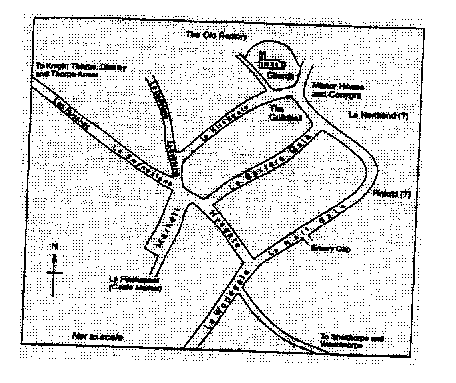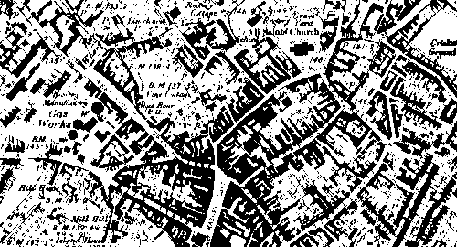
Textbook Unit 1: Techniques
We have prepared a few bullet points which should help you run through a source and evidence question:
- First, read through all of
the sources. It is important to note:
- Author
- Date
- Content
- Split the sources up into
two sections: reliable and unreliable. For this, you will need to look
at each of the things said above:
- Author - Note whether s/he was there, if they were on any particular side, or there is another reason for them to be biased.
- Date - A source written at the time may be more accurate than a source written much later. The reason for this is that inaccuracies may creep into stories along the centuries, disfiguring the facts.
- Content - Does the content seem incredibly biased, or does it look at both sides of an argument equally
- Once who have grouped the sources, read the questions. Make sure that when you answer them you don't end up repeating yourself! Take note of words like explain, own knowledge and make sure you do what the question says. If it says LOOK AT SOURCE, look at source A and read it again. Make sure you are talking about the right sources in the question!
- Now answer the questions, keep referring back to the sources, and where appropriate you should say whether the source is reliable or unreliable and why.
“The whole town of Leicester at this time is built of wood; and so is Loughborough. The town of Loughborough is in size and good building next to Leicester of all the market towns in the county, and has in it four fair streets or more well paved. The parish church is fair. There are no other churches or chapels in the town. At the south east end of the church is a house of timber where once King Henry VII did lie. The great stream of the Soar liver lay on the left of the town within less than a quarter of a mile of it.”
Source B: William Burton, 1622
“This
town is great and large, well sited by reason of wood and water, adorned
with many fair buildings and a large church. King Henry III granted freedom
of keeping a market here upon Thursday and two fairs, the first day of
August and the second of November. It is one of the greatest markets in the
county, to which is brought a great store of grain from neighbouring parts.


- What are the similarities between the two sources? [3]
- Who granted the market to be held at Loughborough? What else did he grant? [2]
- Do these sources explain why Loughborough seems like a pleasant place to live? Explain your answer carefully. [5]
-
- What is the difference in ages between the maps? [1]
- Locate the area that is shown on source C on source D. Does this area seem to have changed a lot between the two maps? Refer to the maps in your answer. [4]
Now do either:
-
Using your knowledge of Loughborough, compare the maps to the current town of Loughborough. [5]
Or:
-
“The Medieval map is unlikely to be very accurate, whereas the 1888 map will probably be reasonably accurate” Do you agree? Why? [5]
- Read through the passage, highlighting important points to use. Highlight more than you are expecting to use.
- Read through again, this time writing notes on the things you have highlighted.
- Read through your notes. Remove any that you do not need, for example, irrelevant or repeated information. Add in any relevant information you have left out.
- Copy out the notes into a final copy.
If you do this process on a computer, it is much easier, as you will not have to copy out the notes into a final copy. You can just insert or delete notes as you go.
If you need to learn the notes, you should then write a hand written, abbreviated version with just key words and dates, etc.
In the 1860s, many cities were building follies in their centres. The citizens of Leicester didn't want to be left out, so a commitee was formed to organise this. It was decided to build a Clock Tower, and a competition was held. Of over 100 designs submitted to the commitee, the winner was from a local firm, H. Goddard and Son.
In 1868, the tower was built. It cost £1000, and was built in just 3 months, by Samuel Barfield and a group of stone masons, out of Ketton Limestone and Pink Mountsorrel Granite.
A few weeks later, Barfield added the statues. They cost £37 10s each and show Simon De Montfort, William Wigston, Thomas White and Gabriel Newton.
The original clock was made in Croyden, by Gillet and Bland, and cost £200. It lasted until the 1960s, when it was removed to the Newarke Houses Museum, to be replaced by a modern electrical system.
The spiral moulding around the shaft covers the edges of the internal steps. It was quite difficult to get the steps into such a small, square shaft. Therefore, the internal steps are often a weird shape.
In the early 1900s, the tower became a connection point for the wires for the Trams of Leicester. The original lines were built in 1874, but the horsedrawn tram system was only replaced by electric in 1904. The clocktower was at the centre of the most complex tram junction in England. The last trams ran on Christmas Eve 1949. Although the wires were removed, some of the iron connecters are still in the stonework.
Until recently, it was difficult to get to the tower, as it was in the middle of a major route for busses through Leicester, but in 1999, Humberstone gate was pedestrianised and it is now possible to get to the tower in relative safety.